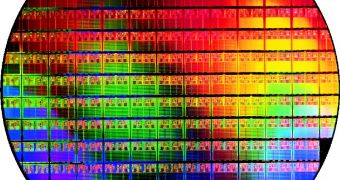Lately the CPU world has been suffering from some serious architectural changes. While that happens pretty often, such a change generally ends up as a new technology ready to be integrated in a future CPU. Well it seems that not everything can go as smooth as it should since it seems that AMD has suffered from some serious failures that could affect the shippings of the new K10 cores.
A quick tour of the K10 architecture reveals that besides the K8-based internal architecture, the new CPUs also feature 2MB L3 cache, 128-bit floating point units (FPU), SSE4A instructions, HT 3.0 and can be packed natively in quad-core form. Currently only classical single-socket K10 CPUs which feature only HT 1.0 have been showcased but dual-socket CPUs will follow soon.
And then we get to the "soon" part. Just how soon is that? Cray has already issued a warning about the delay of Barcelona and Budapest K10 CPUs which could affect long term revenues for XT4 systems. Although AMD has already showcased Barcelona and some even got to see benchmark results, the company is far from being ready with mass shipments.
On the other hand, AMD spokeswoman Marian Kelley claims everything is ok: "We remain on track for a summer 2007 launch with partners shipping platforms in the third quarter. The guidance that we've been giving and that we're sticking to is that will follow in the second half of 2007." I can understand why a spokeswoman can only say good things about his own company but the reality seems different.
In more ways than you think, AMD already postponed the arrival of Opteron quad cores once (first they said that quad-cores will be out on February 2007) and as it turns out they are ready to do that once again. According to AMD it takes about 6 months to switch about 50% of the manufacturing line from one type of wafer to another. And I have a feeling that it hasn't happened yet. On the other hand in clock / clock mode, Barcelona is about as fast as a quad core Xeon but not faster. So where's the advantage of native quad core design? Because I don't see it.
We are just a few, but there are many of you, Softpedia users, out there. That's why we thought it would be a good idea to create an email address for you to help us a little in finding gadgets we missed. Interesting links are bound to be posted with recognition going mainly to those who submit. The address is  .
.

 14 DAY TRIAL //
14 DAY TRIAL //